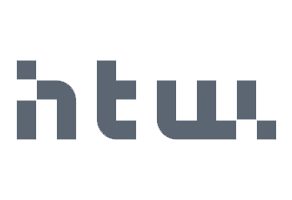install and maintain
Human Skills
in tech










My Topics for your stage
[Talk, EN] Conway's Law: Your career as a system
Conway's Law, known from systems architecture, can be applied directly to career development: your career trajectory reflects your communication and networking structures. In this presentation, you will learn how to analyse your career as a system, identify patterns and optimise them in a targeted manner.
Contents:
* As-is: analysing your existing ‘career architecture’
* Diagnosis: Analyse your communication and network structures.
* Goal-orientated planning: develop a career strategy
* Refactoring and reverse engineering: practical strategies to get from your current state to the desired target state.
Target group: Anyone who wants to actively shape their career and not leave it to chance.
Key messages:
* Conway's Law as a tool for analysing and understanding your career.
* Methods for data-based optimisation of your communication patterns.
* Practical techniques for goal-orientated career planning.
[Vortrag, DE] Conway's Gesetz: Das Tool für deine Karriereentwicklung
Das aus der Systemarchitektur bekannte Conway'sche Gesetz lässt sich direkt auf die berufliche Entwicklung anwenden: Dein Karriereverlauf spiegelt Deine Kommunikations- und Netzwerkstrukturen wider. In diesem Vortrag lernst Du, Deine Karriere als System zu analysieren, Muster zu erkennen und diese gezielt zu optimieren.
Inhalte:
* Ist-Zustand: Analyse Deine 'Karriere-Architektur'
* Diagnose: Analysieren Sie Deine Kommunikations- und Netzwerkstrukturen.
* Zielgerichtete Planung: Entwickeln Sie eine Karrierestrategie
* Refactoring und Reverse Engineering: Praktische Strategien, um von Ist-Zustand zum Wunschkarriere zu gelangen.
Zielgruppen: Alle, die ihre Karriere aktiv gestalten und nicht dem Zufall überlassen wollen.
Kernaussagen:
* Conway's Law als Instrument zur Analyse und zum Verständnis der eigenen Karriere.
* Methoden zur datenbasierten Optimierung Ihrer Kommunikationsmuster.
* Praktische Techniken für eine zielgerichtete Karriereplanung.
[Präsenzveranstaltung, DE] Fokus-Teams: Der Bild-Code zur Zusammenarbeit
Kommunikationsprobleme kosten Unternehmen Zeit und Geld. Dieser Workshop bietet eine praxisorientierte Lösung, um Missverständnisse zu vermeiden und die Effizienz zu steigern. Wir nutzen visuelle Metaphern und Assoziationskarten, um komplexe Sachverhalte auf einfache und intuitive Weise zu vermitteln. Erfahren Sie, wie Sie mit Bildern schneller und effektiver kommunizieren können. Dieser Workshop ist ein interaktives Erlebnis, in dem Ihre Teams lernen, wie sie mit Hilfe von visuellen Werkzeugen sofort zum Kern der Sache kommen.
Kernpunkte:
Verbesserte Teamdynamik: Die Teilnehmer lernen, wie visuelle Kommunikation die Zusammenarbeit stärkt und verborgene Dynamiken aufdeckt. Sie entwickeln ein tieferes Verständnis für die Perspektiven ihrer Teammitglieder.
Effektivere Problemlösung: Der Workshop vermittelt Techniken, um komplexe Probleme visuell darzustellen und innovative Lösungen zu entwickeln. Die Teilnehmer lernen, wie sie kreative Denkprozesse durch den Einsatz von Bildern und Metaphern fördern können.
Reduzierung von Missverständnissen: Visuelle Kommunikation ermöglicht es, abstrakte Konzepte klar und präzise zu vermitteln. Die Teilnehmer lernen, wie sie visuelle Werkzeuge einsetzen können, um Missverständnisse zu vermeiden und die Kommunikation zu optimieren.
Schnellere und fokussiertere Kommunikation: Die Methode hilft Teams, schnell zum Kern von Problemen oder Diskussionspunkten zu kommen. Der Einsatz von visuellen Werkzeugen erlaubt es, "Bla-Bla" zu reduzieren und die Effizienz zu steigern.
Zielgruppen:
Teams, die ihre Kommunikationsfähigkeiten verbessern und die Zusammenarbeit stärken möchten.
Führungskräfte, die nach innovativen Methoden zur Förderung der Teamdynamik suchen.
Projektteams, die ihre Problemlösungsfähigkeiten optimieren möchten.
Tech-Teams, die einen unkonventionellen Weg der Kommunikation suchen.
Format:
Praxisorientierter Workshop mit interaktiven Übungen und Gruppenarbeit. Einsatz von visuellen Metaphern und Assoziationskarten. Anwendung der erlernten Methoden auf reale Szenarien aus dem Arbeitsalltag.
[Workshop, EN] Focus teams: using images to collaborate
Businesses lose time and money due to communication problems. This workshop offers a practical solution to avoid misunderstandings and increase efficiency. Using visual metaphors and association cards, I will show you how to communicate complex issues in a simple and intuitive way. Learn how to communicate faster and more effectively with images. This workshop is an interactive experience where your teams will learn how to use visual tools to get to the heart of the matter.
Main Takeaways:
Improved team dynamics: Participants learn how visual communication strengthens collaboration and uncovers hidden dynamics. They develop a deeper understanding of their team members' perspectives.
Reduce misunderstandings: The workshop provides techniques for visualising complex problems and developing innovative solutions. Participants learn how to facilitate creative thinking through the use of images and metaphors.
Audience:
Teams who want to improve their communication skills and strengthen collaboration. Managers looking for innovative ways to enhance team dynamics. Project teams looking to improve their problem-solving skills. Technical teams looking for an unconventional way to communicate.
Format:
Hands-on workshop with interactive exercises and group work. Use of visual metaphors and association maps. Application of the methods learnt to real-life scenarios.
[Talk, EN] Technical Debt and Human OS
Imagine debugging a codebase, each line a cryptic puzzle, each dependency a potential minefield. Your code as a complex ecosystem, where seemingly isolated issues ripple through the entire system. Sound familiar? We call it 'technical debt,' but could it be that there's a hidden algorithm at play? What if the real bottleneck isn't the code, but the human OS running it?
This session dives deep into the causes of 'technical debt,' transcending the conventional view and exploring limitations that truly drive our development processes. We'll zoom out, revealing the interconnectedness of our systems and the unexpected outcomes that arise from learning and growth. Prepare to expand your understanding beyond the code and discover a new dimension of thinking about 'technical debt.'
The thesis: what if 'technical debt' isn't a bad thing at all, but a sign of positive evolution? Join us to find out!
Key Takeaways:
* Technical debt is more than just code: It's a reflection of human decisions, team dynamics, and the systemic context.
* The "Human OS" is crucial: Personality, emotional intelligence and the way teams function and interact influences the creation and management of technical debt.
* Systems thinking is necessary: To understand technical debt, we must look beyond the code and consider the interconnectedness of all factors.



